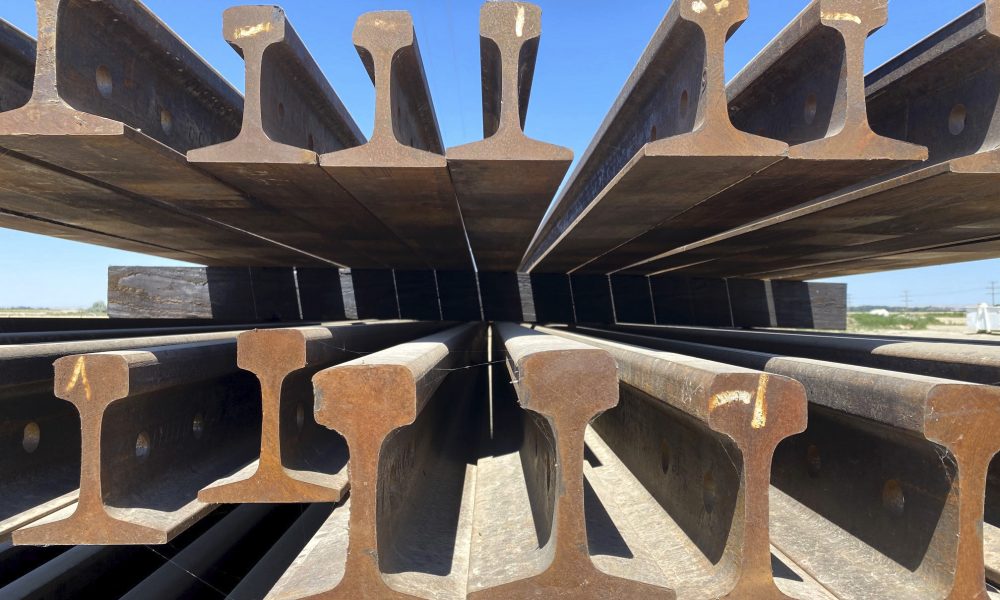Oregon legislators need to come to the rescue of the Treasure Valley Reload Center if Malheur County taxpayers ever hope to benefit. The Nyssa rail shipping center needs to be finished as planned – not the stunted project now being peddled by project leaders.
Here’s the circumstance as of today. The Treasure Valley Reload Center within the next few weeks will consume all $26 million provided by the state – and another $1.5 million given the city of Nyssa to run water out to the site. That won’t get Malheur County what has been promised – a year-round shipping center serving the entire agriculture industry of Malheur County.
At this point, project leaders are expecting another $3 million gift from taxpayers when legislators meet next month.
While that’s helpful, it’s not enough and project leaders and those in Malheur County government know it.
Unfunded needs
The extra money might get up the shell of a building. But it won’t provide the special insulation needed so more than onions can move through Nyssa. It won’t pay for a rail engine needed to shuttle rail cars around. It won’t pay for paved roads, truck scales and more.
In short, even the $3 million gift from taxpayers won’t make Treasure Valley Reload Center functional, according to the project’s lead engineer. “We’re not going to have a finished product until some additional funding can be secured,” engineer Brad Baird recently said at a public meeting on Aug. 10.
But no one can or will say how much money, in fact, is needed to finish this struggling project.
The Malheur County Development Corp. board, in charge of the project, apparently has never asked its team: How much is needed? And neither has the Malheur County Court.
The Enterprise asked Baird, then, for a single number: What total amount of money is needed to have the Nyssa rail center run as intended? He never responded.
State Sen. Lynn Findley and state Rep. Mark Owens asked their legislative colleagues for the extra $3 million. The Enterprise asked both leaders why they didn’t ask for enough to get the project done right. They didn’t answer – and Findley sits on the development company board.
So, we hope state analysts and legislators will step in and insist on getting straight talk about the money needs.
Guard against waste
This is the reality. The $26 million will soon be gone. Construction is far along so there is no debate now whether to build the rail center. Instead, the point for taxpayers and legislators is how to step in with more money to ensure that $26 million isn’t wasted. Let’s focus instead on what it takes then to put up the most effective rail center, not some whittled-down version.
Here’s what should happen.
The Oregon Legislature deemed this a vital project in 2017. It should do so again, through the legislative Emergency Board. Before that board convenes next month, state officials should establish the bottom line here. They need to get to that one number: How much public money is needed to give Treasure Valley Reload Center the best chance to be an economic success? Is it $6 million more? Is it $9 million? It certainly isn’t just the $3 million being chased now.
Legislators should allocate on an emergency basis that extra money – and now. And that money should come with strings:
*Money should be included for the state to retain an independent construction expert to monitor the final work. This would give legislators, taxpayers and the people of Malheur County the faith that their money is being wisely used.
*The Treasure Valley Reload Center should be required from the get-go to serve all agriculture industry. So far, the onion industry has dominated the project and taken care of its own interests. Legislators should insist that other crops and livestock opportunities are addressed immediately.
*The Malheur County Court should be required to appoint two new members to the development company board. One should be a financial expert. The board doesn’t have one. And one should be from another element of the county’s agriculture community – this isn’t just an expensive onion shed.
*Money should be allocated for an independent analysis of the engineering on this project. This became a money pit because engineers misjudged the extent of wetlands at the site. That mistake has cost somewhere in the neighborhood of $5 million. Without that mistake, there might be no need for extra money. A state review should determine whether it was bad luck or bad engineering that proved so costly.
Accountability needed
A number of legislators are scheduled to visit Malheur County in coming days. We welcome them and urge them to gain a sense of the intractable poverty in this region, the special challenges of Idaho, and particularly how housing impairs hopes of prosperity.
We also hope they will bring with them a sharp-eyed view of public projects and public money. We hope they are not dazzled by Powerpoints and local meals and gushing promises. We hope they will recognize that many in Malheur County do not share confidence in this project as it’s currently managed.
As it is, project leaders seem to be hoping they will find yet another coffee can of cash after the Legislature provides only partial funding. Let’s move from hope to action.
We hope legislators who visit and those on the Emergency Board agree with us. It’s time to get this right. They should ensure both that the full check needed gets written next month and that tight state accountability is imposed. That is truly Malheur County’s best hope of salvaging success from the muddle we have now. - LZ



